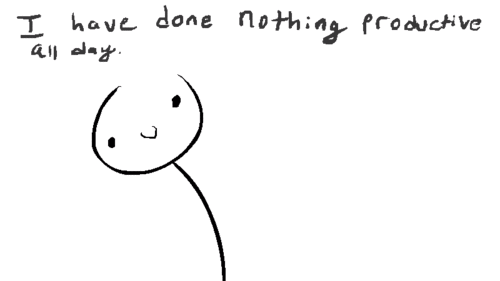Text
Grounding
WHAT IS GROUNDING?
Grounding is a set of simple strategies to detach from emotional pain for example (cravings, self harm urges, emotional eating behaviour etc.) Grounding can also be a way of returning your attention to the outside world and away from yourself. In the case of dissociation.
WHY PRACTICE GROUNDING TECHNIQUES?
When you are overwhelmed with emotional pain, you need a way to detach so that you can gain control over your feelings and stay safe. As long as you are grounding, you are more likely to be able to overcome urges. Grounding ‘anchors’ you to reality.
Many people with PTSD and dissociative disorders struggle with either feeling too much (overwhelming emotions and memories) or too little (numbing and dissociation). In grounding, you attain balance between the two—conscious of reality and ability to tolerate it.
GUIDELINES:
§ Grounding can be done any time, anywhere and no one has to know.
· § Use grounding when you are: faced with a trigger, having a flashback or dissociating.
· § Keep your eyes open, look around the room, and make sure the light is good to stay in touch with the present.
· § Rate your mood before and after to test whether it worked. Before grounding, rate your level of
· § emotional pain, or your level of dissociation. Then re-rate it afterwards. Has it gone down?
· Try not to make judgements or think negatively. The idea is to distract from the negatives.
· § Stay neutral—no judgments of good or bad.
· § Focus on the present, not the past or future.
· § Grounding is much more active than relaxation exercises and focuses your attention.
Grounding is deemed to be a better way of coping with PTSD and dissociative disorders than relaxation practice. As during relaxation the focus is too much within the body, which at the worst may bring on flashbacks.
WAYS TO GROUND
MENTAL GROUNDING
o ♣ Describe to yourself in detail your surroundings: For example “The walls are white, there are three pink chairs and a blue sofa. There is a picture of a brown border collie on the wall with a gold frame around it.” You can do this out loud if appropriate, or in your head if you are in public.
o ♣ Play a game like “Scattergories” in your head or with a friend or family member. Choose a letter of the alphabet and try and come up with as many examples of a category you choose as you can. For example C … Boys names: Christopher, Curtis, Carl, Charles etc.
o ♣ Do an age progression. IThis can be particularly useful if you have dissociated or regressed to a younger alter or state. For example in my experiences I have an alter who is three. So I might say… Now I am four, I am at home with Mummy and Daddy and I can do (an example of an age appropriate activity) alone. Work your way up until you are back to your current age. This may not always work for little alters, but can help.
o ♣ Describe an everyday activity in great detail. For example if you like gardening “I open the shed door and pull out the lawn mower, I connect it to a power supply and climb on. I turn the key and put it into drive….”
o ♣ Imagine. For example make up a nice little story in your head, or out loud. “I am putting some roller skates on, and I am slowly gliding away from all my emotional suffering down a beautiful smooth lane, having fun listening to my favourite music LOUD!”
o ♣ Say a safety statement. ‘My name is _________; I am safe right now. I am in the present, not the past. I am in _____________ the date is _____________.
· ♣ Read something, saying each word to yourself. Or read each letter backwards so that you focus or the letters and not on the meaning of words.
· ♣ Use humour: For example have a “Funny Memory Bank” where you store up your favourite witty moments for those detached, rainy days.
· ♣ Count to 100 or say the alphabet very slowly or very fast.
· ♣ Repeat something meaningful to yourself, such as a prayer or quote. For example you could use the Serenity Prayer.
PHYSICAL GROUNDING
û Run cool or warm water over your hands.
û Grab tightly onto your chair as hard as you can.
· û Touch various objects around you: a pen. keys, your clothing, the table, the walls. Pay close attention to colours, weights, textures etc.
· û Firmly stamp your feet on the floor, literally grounding yourself. Feel the tension of your feet against the pressure of the floor.
· û Carry a ground object in your pocket—a small object such as a rock, stone, crystal, bead, piece of string or cloth, or a stress ball that you can touch whenever you feel triggered.
· û Jump up and down.
· û Stretch reach upwards and pull yourself tall. Extend your arms, legs, fingers and toes.
· û Walk slowly, noticing each footstep.
· û Eat something yummy. Notice the flavours, textures and feelings that come up for you.
SOOTHING GROUNDING
· ♥ Use Cheerleading statements, as if you were talking to a small child. For example “You are having a difficult time adjusting to these chanes, but you are doing so well. You should be proud of yourself.”
· ♥ Think of favorites. Think of your favorite color, animal, season, food, time of day, TV show.
· ♥ Picture people you care about. Even get a photobook made of positive pictures or pictures of people you love! Such a simple nice way to ground, and you can get A4 photo books at the moment from GroupOn for under £7!! (I in no way endorse them I just thought it was a good offer!)
· ♥ Remember the words to an inspiring song, quotation or poem that you like or feel positively about. Maybe write out the words and decorate it for your wall.
· ♥ Remember a safe place. Describe a place that you find very soothing it could be when you went on holiday to the beach, or walking in the woods. Or just a time you felt safe and peaceful at home in your living room or in bed.
· ♥ Plan out a safe treat for yourself, such as a trip to a coffee shop with a friend, making a nice dinner or a bath with some nice toiletries or candles if you feel safe to use them
· ♥ Think of things you are looking forward to in the next week. Perhaps schedule your time so you build some structure for chores and pleasurable activities. It can help to know what you are doing and also not just sit at home with nothing to do. This can cause difficulties.
WHAT IF GROUNDING DOESN’T WORK?
♠ Practice as often as possible. Even when you don’t feel overwhelmed or dissociative. This way it will come more naturally to you when you are struggling.
♠ Practice faster. Speeding up the pace gets you focused on the outside world quickly.
♠ Try grounding for a Ioooong time 20 mins at least, and then repeat !!
♠ Try to notice whether you do better with physical or mental or soothing grounding.
♠ Create your own methods of grounding. Any method you make up may be worth much more than those you read here because it is yours.
♠ Start grounding early in a negative mood cycle. Start when you begin to feel the early warning signs of dissociation or when you have just started having a flashback.
15K notes
·
View notes
Text
My Imagery Script I Wrote for Class 4 Years Ago

I am so glad I’ve learned better and can begin to fix this nonsense.
#music therapy#guided imagery#why did I think I could write good guided imagery when I wasn't even a certified MT
1 note
·
View note
Note
if a patient is just starting medication and acting out are you able to tell when its the medication side effects and when its the patient? or if its both? i mean like in general is a therapist able to distinguish that?
Therapists are generally not medical professionals (psychiatrists and NPs being the exception). So, no, a typical therapist does not have the medical training to identify subtle or complex medication effects. Obvious effects- like tardive dyskinesia or severe weight gain -are much more doable for a therapist, but even in those cases, I consult with the client’s prescriber rather than making any decisions myself.
11 notes
·
View notes
Text
No longer that-mti-life because...
I got board-certified today!


Thanks to everyone who prayed for me or sent good wishes! I can’t tell you how much your support meant to me as I nervously paced through those questions (and had a freakout when the test center told me that my survey responses about the testing center were “invalid” and I almost didn’t get my score).
Now it’s party time!
4 notes
·
View notes
Text
What I should be doing: studying for the CBMT exam
Me right now:

0 notes
Text
Really annoyed that all the jobs I want say I’m “not qualified” without my MT-BC. I get it, I really do. Music therapists need to be board-certified. But I’m also annoyed that they’re not even willing to give me a chance, or have conditional employment or something.
Cannot wait for June 12th, because after that, I’m busting butt for all the MT jobs I want.
0 notes
Photo

This.
148K notes
·
View notes
Text
Just Registered to Take the CBMT Exam!


Definitely nervous, but I know what I need to study, plus I’m going to take the practice tests. Music therapists who’ve taken the practice test, is there any real difference between the regular practice test and Test B? I don’t want to pay for both tests, cause at 75 dollars a pop, that’s more money than I really have right now.
Hoping I’ll have a reason to change the blog name soon!
1 note
·
View note
Text
I Have a Job!

I don’t want to give too many details publicly, but I’m working with adolescents in a residential setting, and I’m super excited! Next step: make that money so I can take the exam and get my MT-BC!
15 notes
·
View notes
Conversation
How to play the guitar
Guitar teacher: You MUST play the correct chords and learn how to barre the frets and do everything properly!
Music therapist: Lol here's how to cheat and sound even better while only playing two strings
16 notes
·
View notes
Note
How long is too long in therapy? I am so scared that I'm taking too long to get better.
that’s a tough one, anon- different people need different things. A really famous psychologist, Christopher Martell, once told me (okay, he told like a whole room of people, but I was there) that a therapist and client should “check in” every 10 sessions to make sure they are still on track, because it’s easy to get derailed from the client’s therapy goals, or not be focused enough in each session to make progress. If you feel like your session time is too scattered across different topics, or that you change directions a lot, or that the approach you and your therapist are taking isn’t working, then a “check in” is probably a good idea to make sure you’re moving in the right direction. In any case, be kind to yourself. Making big changes in your life is hard and does take time and effort.
18 notes
·
View notes
Text
honestly gas lighting is so harmful because even years later you question if you’re even allowed to be upset with people and you completely doubt your perception of situations
4K notes
·
View notes
Text
Self-acceptance isn’t something that happens overnight. It won’t occur miraculously. It’s something that we have to actively participate in if we want to make any real progress. It takes time, work and effort. And it’s something that we have to do; no one can save us from our thoughts except us.
It means making the choice, each and every day, to counter negative self-talk, to consciously remember the things we like about ourselves. It’s a decision that, when insecurity hits - and it undoubtedly will - we’ll do our best to put up a fight and stand our ground, to counter our inner critic with kindness and compassion.
It’s a lifelong journey; self-acceptance isn’t a destination, it’s a process, a habit, a skill to be honed. It gets easier over time. But it starts with a simple choice, the decision to be a friend to ourselves, a guardian of our own well-being and an active participant in our own lives.
4K notes
·
View notes
Note
What would be your response to a client, who has just lost his wife and daughter and who has a history of trauma and loss from being a marine in the past, stating "Please give me some advice, what can I do to make this pain go away. Don't just tell me time will heal and all that bullsh*t give me a coping skill I can actually use that will help."
We’d work on coping skills.
4 notes
·
View notes
Audio
Starting a new thing on the blog. I’ll talk about songs I’ve used in sessions, and how I’ve used them. I’m starting today with one of my favorite songs, especially when used in a therapeutic context.
Here are the lyrics. After I play the song, which I generally play live (if you want the chords, just message me, send me an ask, or reblog this post), I engage some kind of discussion about what they’re saying about courage. Sometimes I’ll include famous quotes about courage in the discussion, such as “Courage does not always roar. Sometimes courage is the quiet voice at the end of the day saying, 'I will try again tomorrow.’“
After the discussion, I’ve engaged the client or clients (have used this in both individual and group settings) in a piggyback songwriting experience. One of the reasons I like using this particular song for songwriting groups is that the almost sing-song quality of the melody allows for clients to really express their thoughts as they want to express them, rather than having to change the words they truly want to use. The songwriting process could easily take up two hour-long sessions, or even longer, depending on the group size and how opinionated everyone in the group is. :)
I’ve wanted to do some kind of art-related project to this, like draw yourself being courageous, or draw something courageous that most people wouldn’t think of as courageous, and share what they think courage is.
I’ve only used this song with adults in a mental health hospital setting, but this could be easily used with older children, adolescents, or possibly older adults, depending on how the session is shaped.
What are some of your favorite songs for songwriting?
1 note
·
View note

